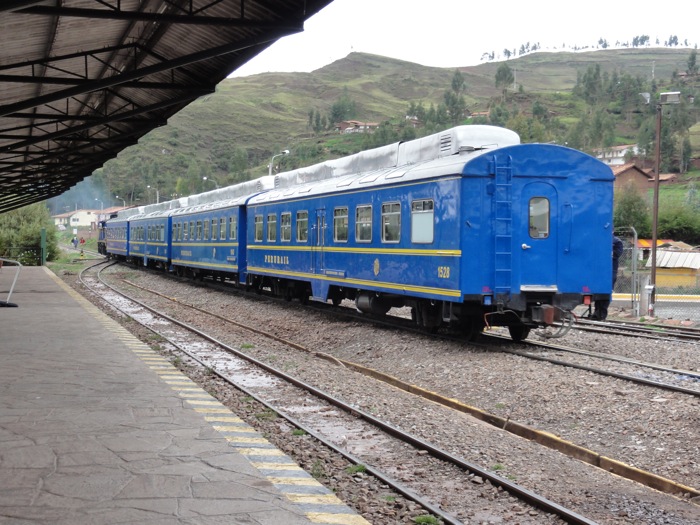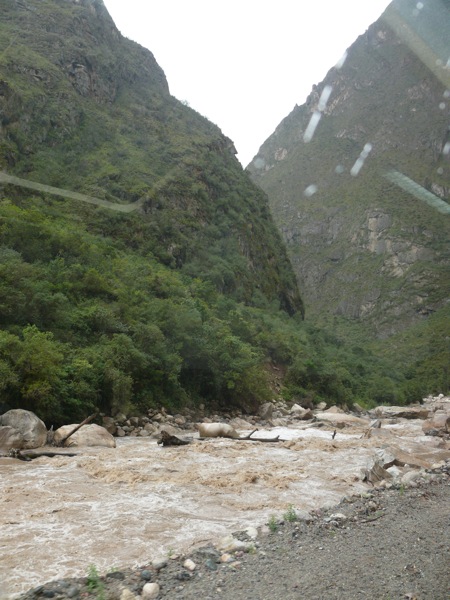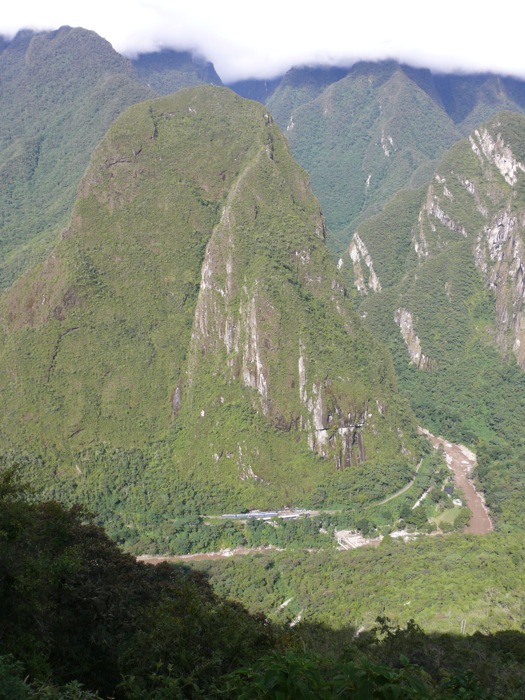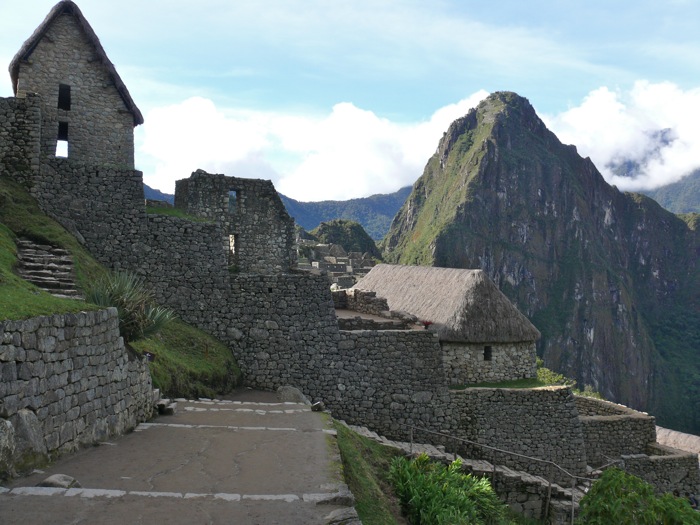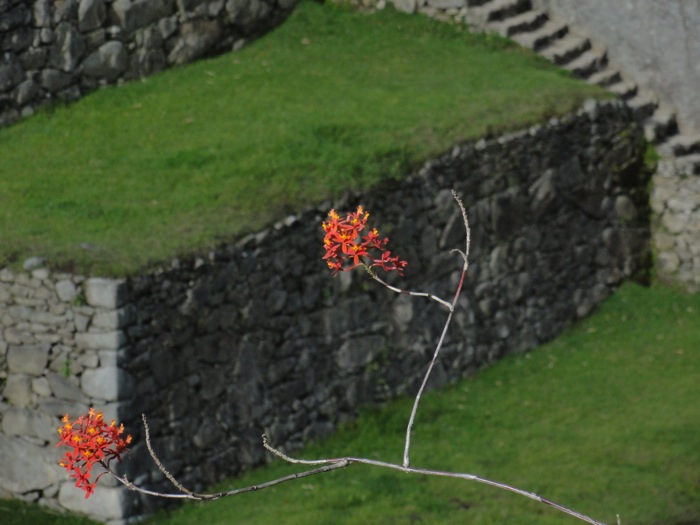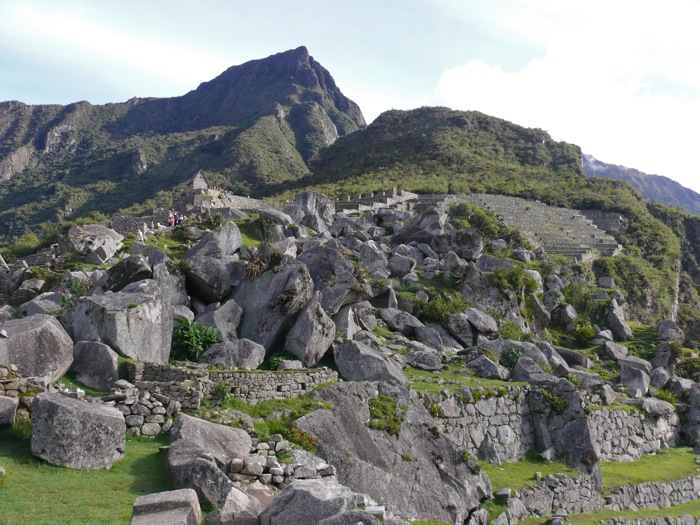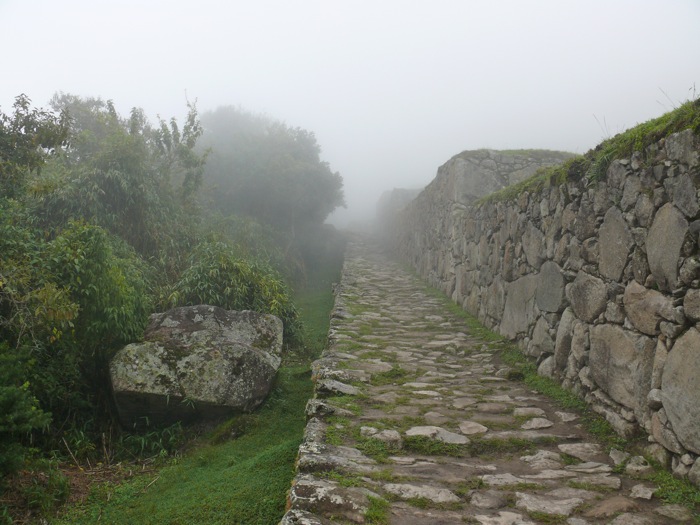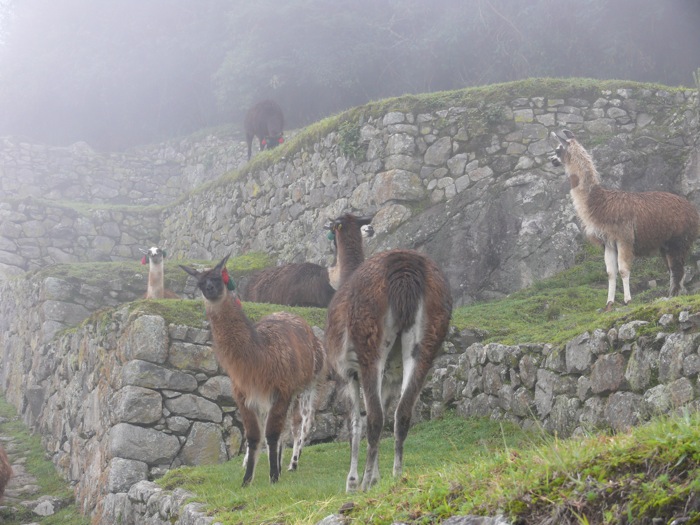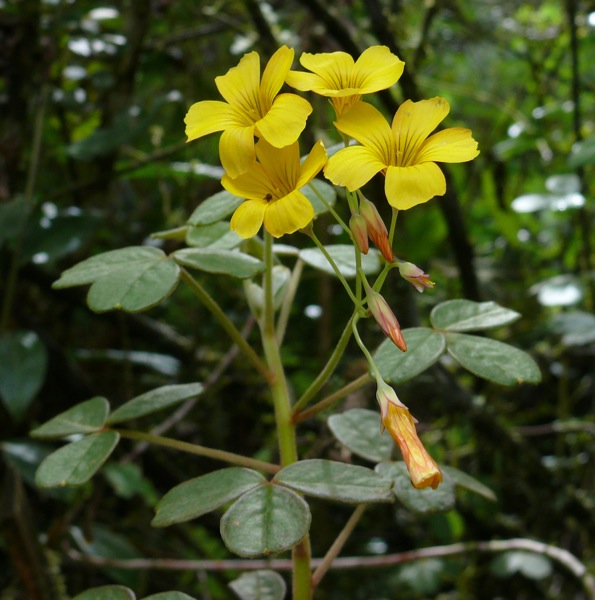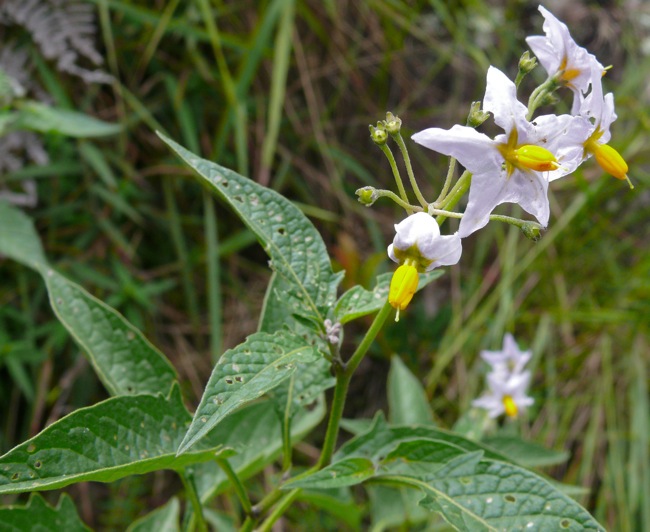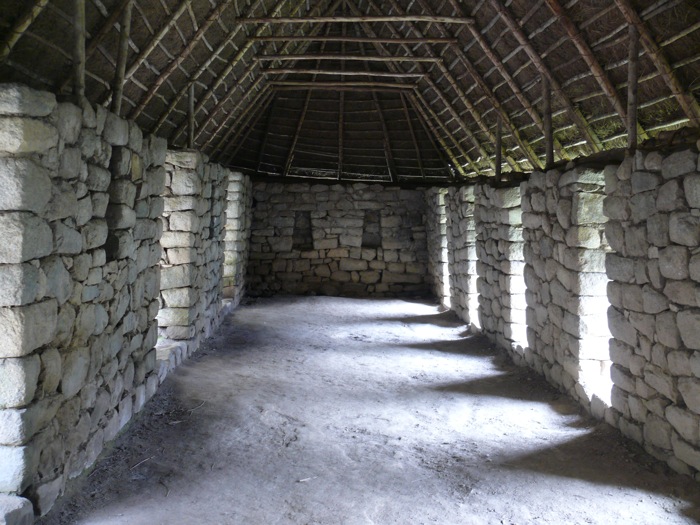This post has loads of pictures. Machu Picchu and the landscape around it is so photogenic – steep mountains, mist rising from the valleys, and bright colored flowers.
Machu Picchu is protected in a ‘Historical Sanctuary’ – a lot like a national park. This is the train we took from Cusco to the town below the park. It’s about a 3 hour train ride.
The train station
The train follows the valley of the Urubamba River. At first it’s a wide valley, with farms and small towns.
Gradually the valley narrows, and the mountains get higher.
At one point the train has to take a zig zag track – go forward and back a few times to get farther down a steep slope.
The train was very comfortable, and with windows in the ceiling so we could see the tops of the mountains.
This was our very friendly waitress who served us coca tea and snacks.
A lot of the hillsides are terraced – sometimes to make flat land for crops, other times to protect the edges of the river from erosion.
For the last part of the trip the river rushes along quickly – very muddy and full of rapids.
Finally we came to the little town below the park. It’s filled with hotels, a crowded tourist market, and the train station.
This is a stream that runs down from the mountain, through the town, and into the river.
Next we had to get up the hill – to the park and to our hotel. We stayed at the only hotel that’s close to the park – it’s right next to the entrance. It was nice to be so close. The trip up the hill is an exciting half hour bus ride, up a road that consists entirely of hairpin turns. This is a view of part of the road – there are more turns that aren’t visible.
These are the patios to the rooms at the hotel – ours is the last one on the left.
Beautiful flowers in the little garden. Fuschia
Orchids
And more orchids
Checking email – the internet connection worked best at the bar.
The archeological site is in a stunning location – on a high saddle between two mountains. All around are incredibly steep mountainsides, dropping down to rivers at the bottom. It’s at an elevation where it’s almost cloud forest, so there’s lots of mist coming up from the valleys. Sometimes the mountains are invisible, and then a few minutes later, the clouds lift and the sun comes out.
This shows the Urubamba River and the beginning of the road up to the park.
Orchids growing out of one of the old walls
Rufous-collared Sparrow – these are as common as House Sparrows are in the US.
The hillsides are incredibly steep.
When we went back the next morning, it was very misty.
The llamas wander around the site – I think they’re probably there to keep the grass short.
They’re not fenced in or tethered, but they do have colored tassels on their heads, and tags that give their names.
They’re pretty indifferent to people.
The mist lifting
Begonia sp.
The stone walls are fitted together without mortar.
Lizards like the stone walls too.
We walked up a steep path to a small look-out place between the two mountains.
This was the steepest part of the path – we had to pull ourselves up the rock with a rope.
The beautiful view from the top.
We also walked to a place where we could see a bridge that could be ‘closed’ to protect the inhabitants from invaders. There’s a gap in the path which is connected by some logs. If the logs were removed, no one could get past. The cliff above and below the bridge is completely vertical.

The walk down to the bridge
The bridge. (The wooden gate is to keep visitors out.)

Some of the buildings have been restored so you can see what they would have looked like with roofs and rebuilt walls.

